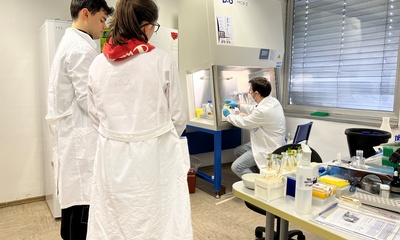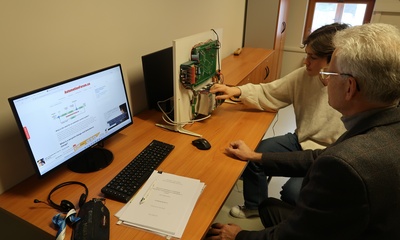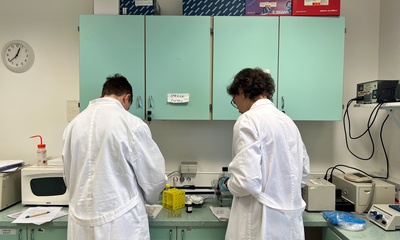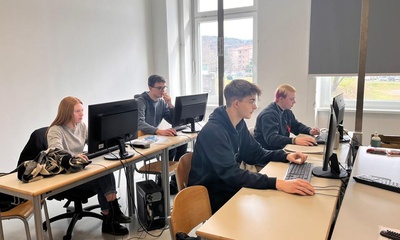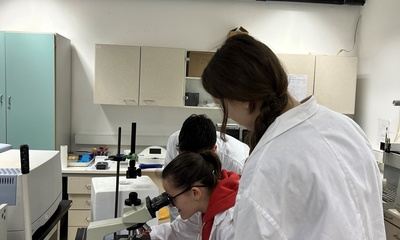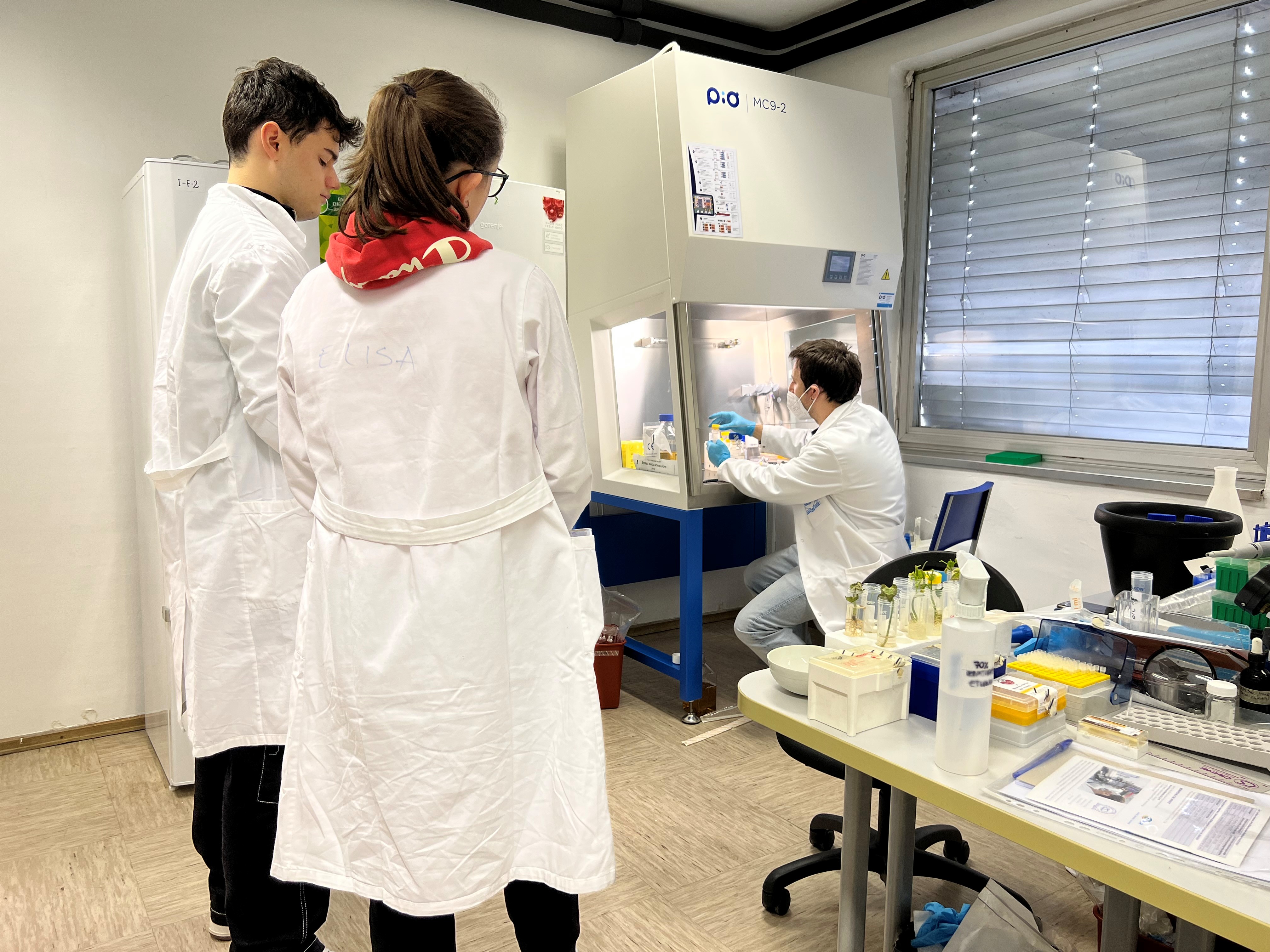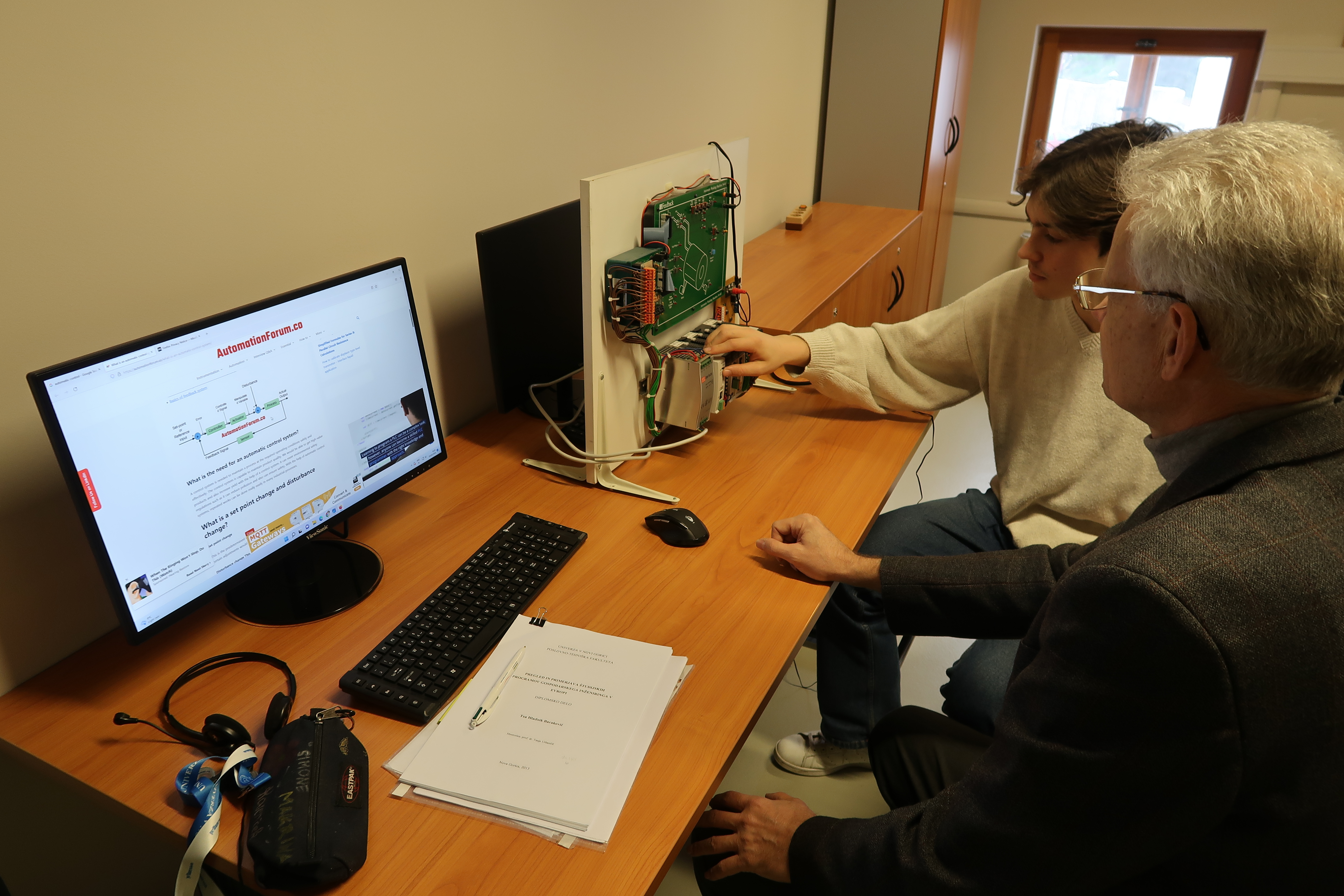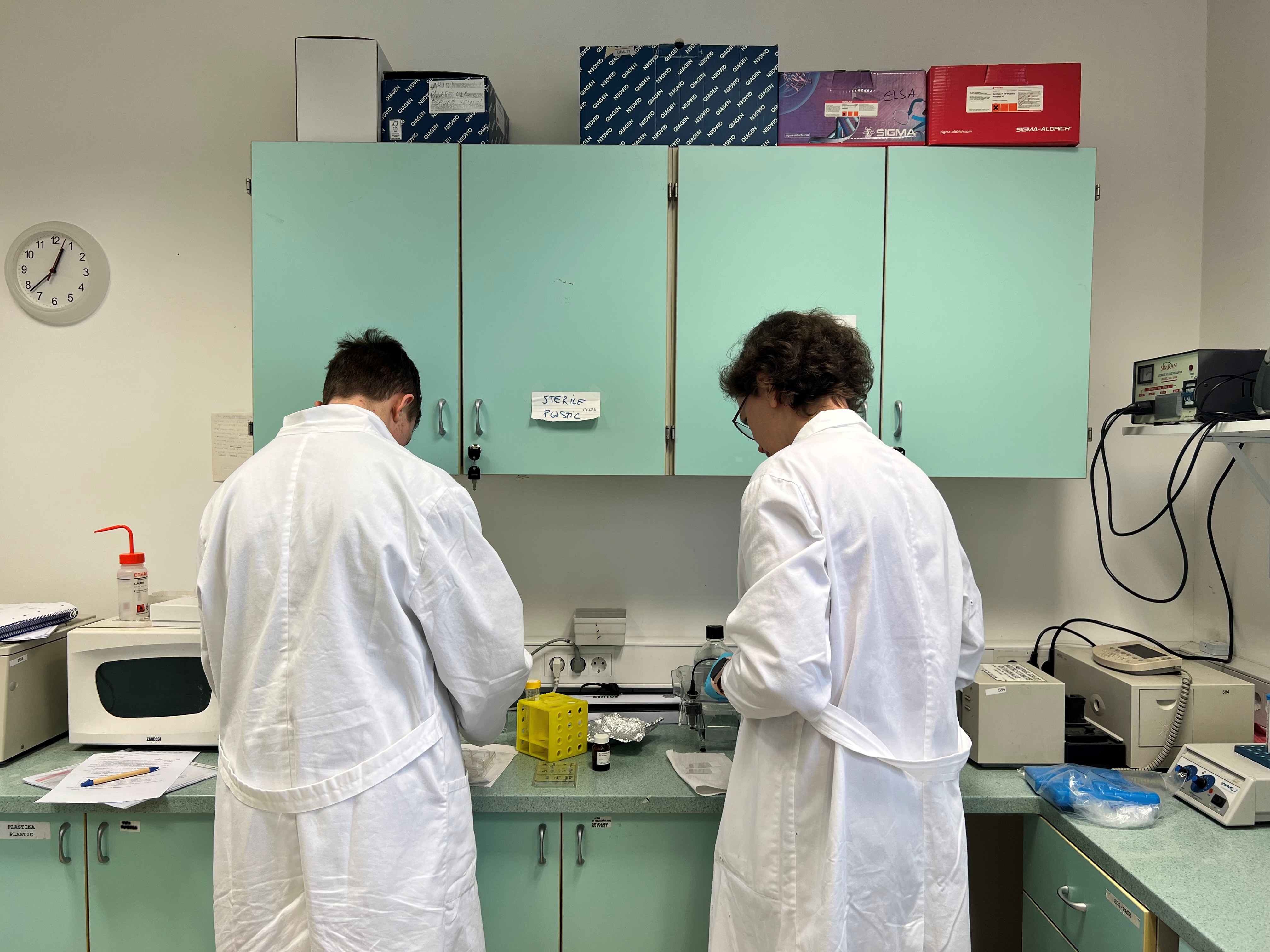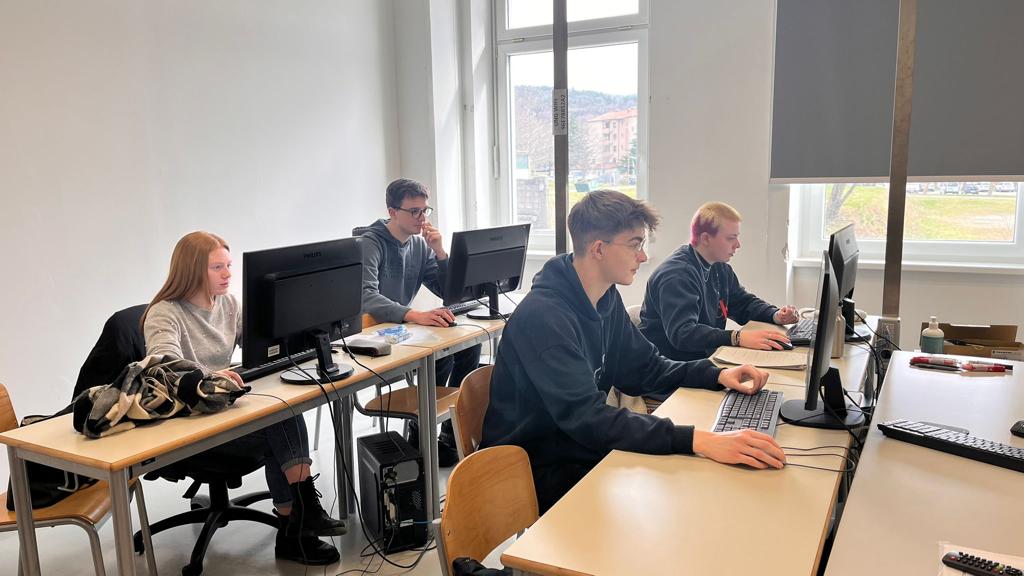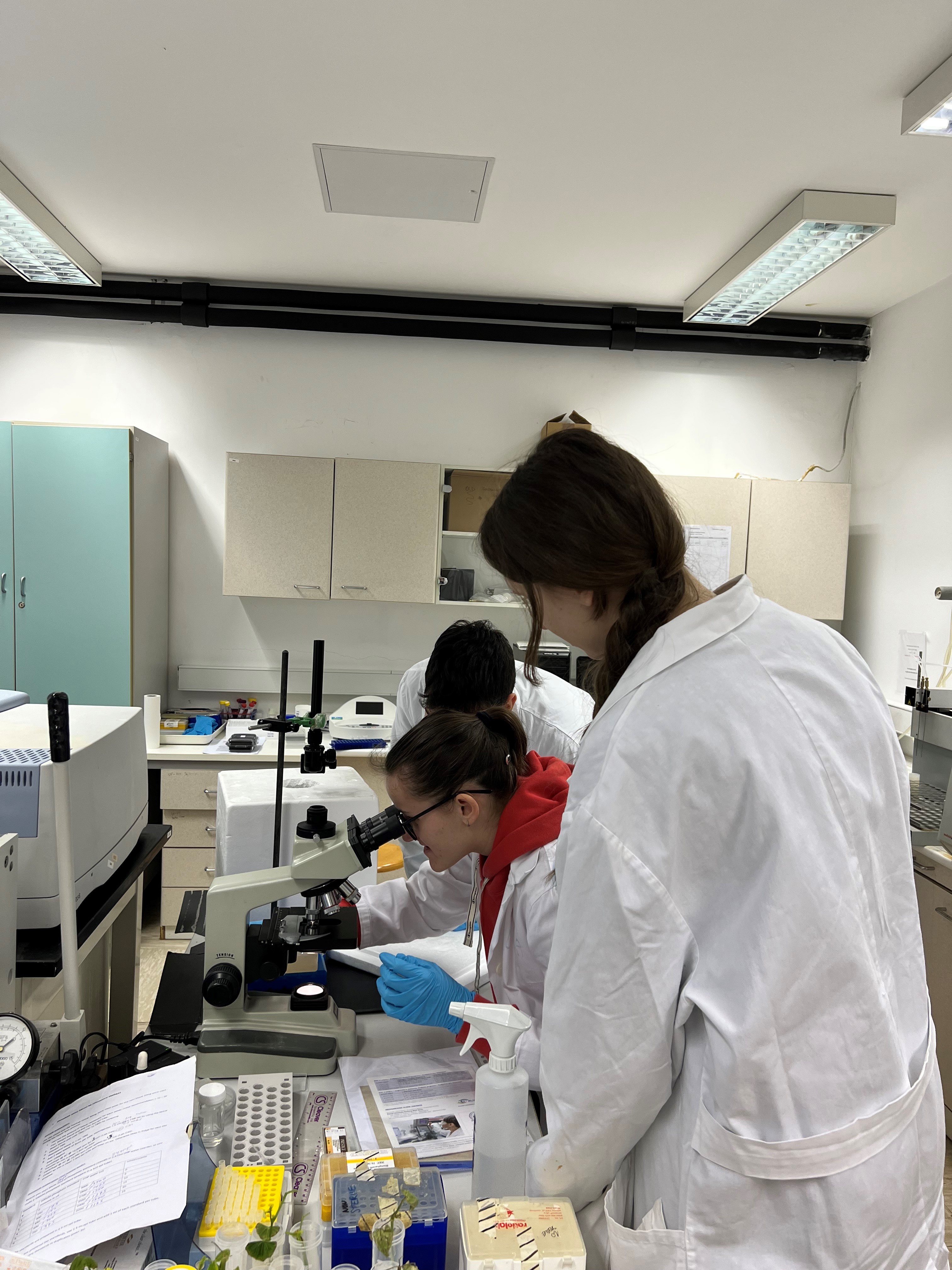We hosted students from the Slovenski licejski pol secondary school in Gorizia
In the last days of February and first days of March 2023, the faculties, laboratories and centres of the University of Nova Gorica once again welcomed seventeen fourth-year students from the Slovenski licejski pol secondary school in Gorizia.
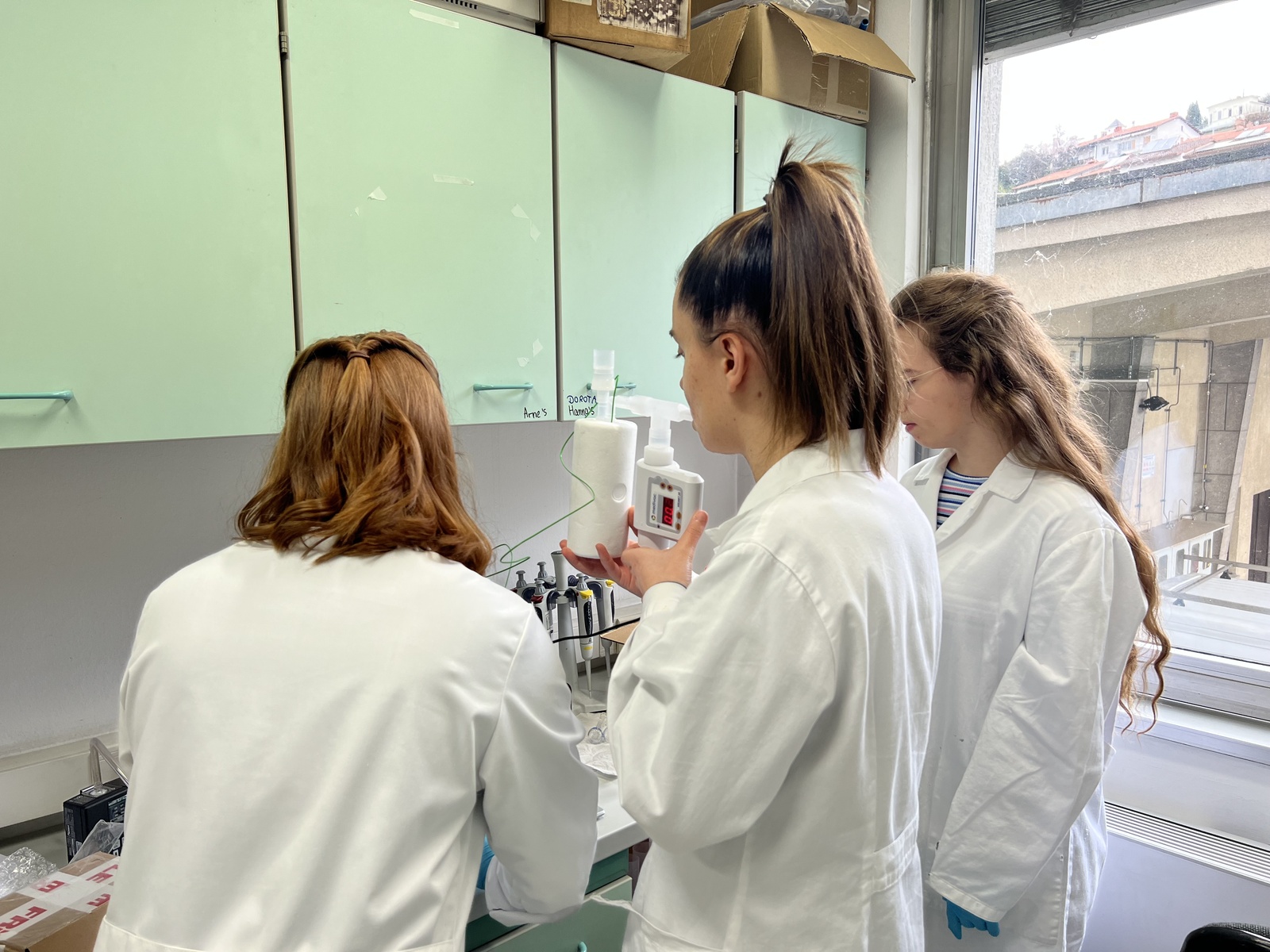
At the University of Nova Gorica, the students once again undertook their practical placements, which are a compulsory part of the learning process at secondary schools in Italy.
As in previous years, the students were introduced to a wide variety of fields - in the field of environmental sciences, they worked in the Laboratory for Environmental and Life Sciences, where they were introduced to different photothermal techniques for the characterisation of materials. They learnt about the concept of nanofluids and their properties. They were taught how to prepare standard solutions and samples for analysis with select photothermal methods.
Molecular genetics and biotechnology were once again of great interest to students this year. The students were introduced to standard recombinant DNA techniques, recombinant protein purification methods and the bioinformatics programme. Another group of students carried out an experiment in which bacteria were modified with an expression vector carrying an antibiotic resistance gene. One student studied the effect of arsenic on the viability and genetic stability of a human cell line. Arsenic contamination of drinking water is still a very serious environmental problem affecting a large number of people.
The students interested in astrophysics who undertook their practical placements at the Centre for Astrophysics and Cosmology, had the opportunity to experience first-hand what it means to be a researcher. During the first project, the students were introduced to the Cherenkov Telescope Array (CTA), and learnt where cosmic high-energy gamma rays come from and how they propagate through space. They were taught about astrophysical objects such as active galactic nuclei, pulsars and supernovae, and dealt with "dark matter", which we don't know a lot about, but which accounts for 85% of the mass in the Universe.
During the second project, the students learnt about ultra-high-energy cosmic rays (UHECR) and the Pierre Auger Observatory in Argentina, which can measure their properties. UHECRs coming from space have energies more than a million times higher than the particles we can create through acceleration on Earth. They also learnt about open-source tools and used them to analyse the observatory's freely available measurements.
At the School of Engineering and Management, the students learnt more about the economics engineering profession and its role in ensuring a company’s success. They were exposed to both the business and technological aspects of the field, and learnt why the curriculum of an economics engineering degree is so diverse. They also learnt about several real-life examples of how the skills of an economics engineer can be applied, from designing a solar power plant to using IT to optimise processes.
At the School of Viticulture and Enology, the students were introduced to research work in the Wine Research Centre and its wine laboratories.
A student who performed her practical placement in the Research Centre for Humanities, learnt about the fields of research and projects carried out in the unit, and spent most of her time working with the Pisma (Letters) electronic database. The database is a project aimed at digitising old letters from both famous and ordinary people. She also looked through a large album of various postcards by Ema Jurkovič. She picked out postcards that are rich in content and shed light on the relationship between father and daughter. The postcards were then scanned, copied and entered into the electronic database.
The practical placements thus gave the students the opportunity to learn about new fields, gain new skills and practical experience, while also being important for giving young students a first-hand insight into different professions. This experience can later help them decide on their studies and their path in life.
The feedback from the students on their satisfaction with the practical placements was very positive. The students particularly liked the international environment, as they could communicate in three languages, as well as the friendliness and accessibility of the mentors and the new fields they were introduced to. Many of the secondary school students would like to learn even more new skills, and they will certainly be sharing the experience with their peers in the junior years.
A student's statement on her internship experience: “This experience gave me an insight into how work and research is carried out in a laboratory, and it made me realise that I could definitely be pursuing this career in the future. I think this project is a great help for students who have to choose which universities to attend in the future.”
